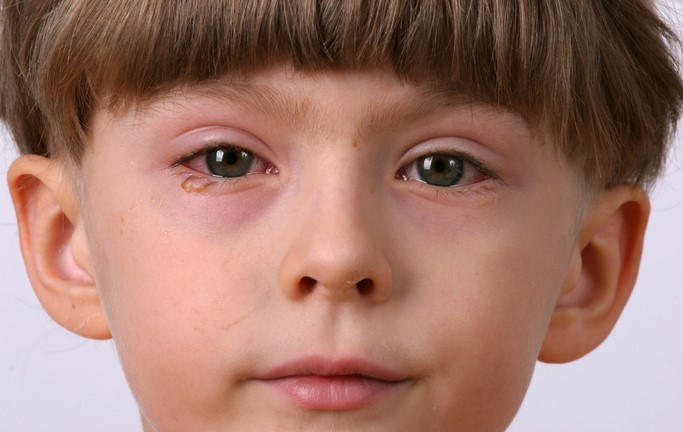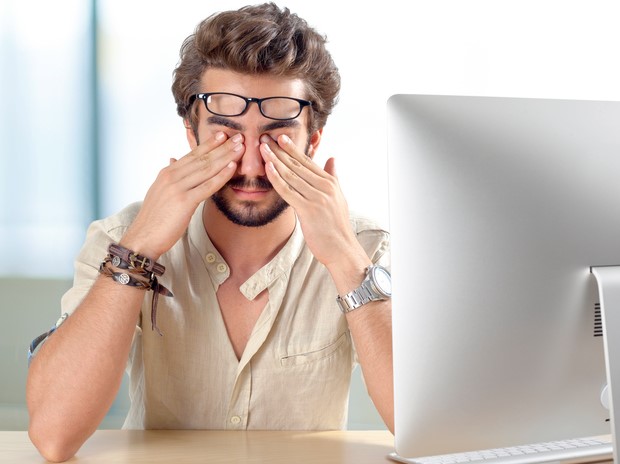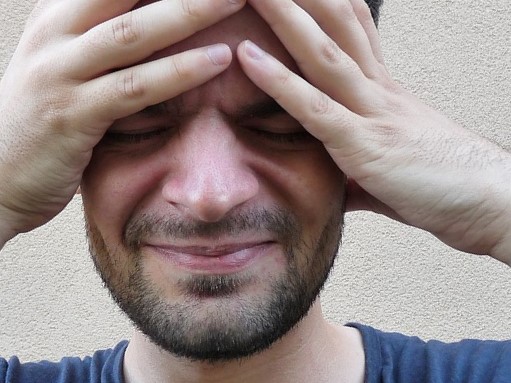Pressure in the eye and the feeling of pressure as a symptom? What causes can it have?

It is caused by a disease of the eye, but also of the eyelid. It can be a symptom of inflammation, but sometimes a tumor or other serious disease is behind the pressure. An eye examination is the best option when difficulties occur.
Pressure in the eye or the sensation of pressure in the eye is the pressure that a person feels in the eye, but also behind the eye. It can be caused by a disease directly in the eye or by diseases of the nerve connection of the eye.
In some cases, cancer can also be behind the pressure. In problems with blood vessels, the person feels as if the eye is being pushed out of the eye socket. In some cases, it is also possible to feel the opposite pressure, which the sufferer feels directly on the eye.
The pressure can also be caused by fatigue, draughts or other minor problems. The causes are variable, and this is why an examination is recommended when problems occur. Once diagnosed, the ophthalmologist will suggest treatment to prevent complications.

Depending on the cause, other problems are associated. In addition to pressure in the eye, the following symptoms may also occur:
- itching, burning, cutting
- feeling of sand in the eye
- redness of the eye and eyelid
- swelling of the eyelid
- tearing
- discharge
- headache
- visual disturbance
- pressure in the ear
Glaucoma pain
Glaucoma, also known as glaucoma, is characterised by pain in the eye and also by a feeling of pressure in the eye. In reality, it is not a glaucoma. In the final stage, the cornea of the eye becomes cloudy, but initially there is an increase in intraocular pressure.
The intraocular pressure rises due to the blockage of the outflow of the intraocular fluid that normally circulates through the eye. As a result of the increase in this pressure, the optic nerve is damaged and the vision itself is impaired. The treatment is laser or surgical.
Barley grain as a cause of pressure in the eye
A disease of the eye, specifically of the eyelid, is also known as a 'barley grain'. In this case, pressure in the eye and, in particular, the feeling of pressure on the eye from the eyelid is present. The pressure is not the classic pressure from the inside of the eye, but from the outside.
This pressure on the eye is due to the formation of a painful swelling, a grain on the eyelid, which is full of pus. It is formed due to a blockage of one of the superficial glands of the eyelid. It is a typical inflammatory disease of the eyelid.

Dry eye syndrome
Pressure in the eyes is common in dry eye syndrome. This disease represents a disorder of washing, moistening of the eye surface. This is caused by insufficient production of tears, which form a tear film on the surface of the eye.
Tears are formed in smaller quantities or are of poor quality. To moisturize and protect the eye, it is important to have the right composition. They contain water, oil, mucus. In addition to pressure, symptoms such as burning, itching, cutting of the eyes, but also eye fatigue, impaired vision, sensitivity to light and headache are associated.
Nerve inflammation
Most often, the cause of pressure in the eye is neuritis (inflammation of the nerve). Specifically, it is inflammation of the optic nerve. It can be either bulbar, when changes can be found on examination of the ocular background, or retrobulbar, when, on the contrary, these changes are not found by the ophthalmologist.
Neuritis as such is caused by irritation of the nerve. It is a relatively common nerve disorder, which is accompanied by pain. In this case, pain in the eye when moving.
Optic neuritis most often affects the optic nerve directly in the eye, which transmits visual sensations to the brain centre. Sometimes a person has a temporary and partial loss of vision, possibly blurred vision or problems with colour recognition.
Most often, optic neuritis is caused by a viral infection. Sometimes it can also occur after a concussion or trauma to the spinal cord. However, there are cases where there is also swelling of the myelin layer of the nerve.
It accompanies migraine
In addition to these difficulties, pressure in the eye also occurs in migraine. Migraine is an attack of headache, the pain is throbbing, has a great intensity. The headache may be accompanied by eye pain, and this may be of a pressure nature.

It also occurs in childhood. Attacks recur in variable periods of time. From one once a year to frequent, multiple times a month:
- sensitivity to light and noise
- swelling of the eyelids
- redness of the face
- irritability
- fatigue, exhaustion
- vomiting
- diarrhoea
- abdominal pain
- inappetence
Even in multiple sclerosis
Retrobulbar nerve inflammation can also be caused in multiple sclerosis, which is also a nerve disease. Multiple sclerosis affects the central nervous system, especially the brain and spinal cord. It most commonly occurs in people between the ages of 20 and 40.
There is a breakdown of the myelin structure on the surface of the nerve, which insulates and envelops the nerve fibres and also helps to transmit the nerve impulse. Pressure in the eye is present when this structure is damaged.
Diseases with symptom "Pressure in the eye"
Interesting resources
Related










